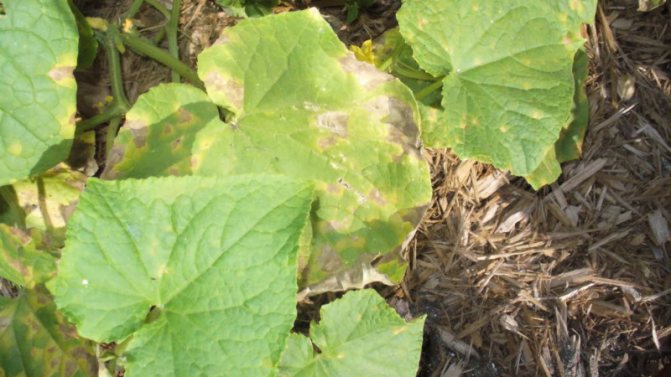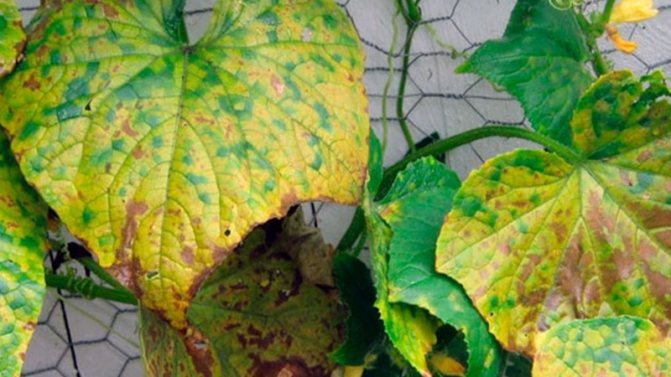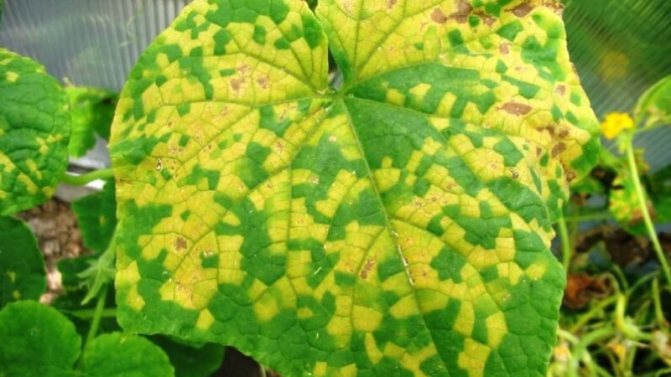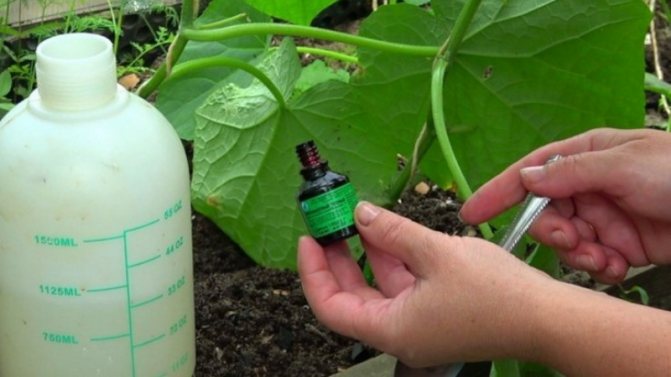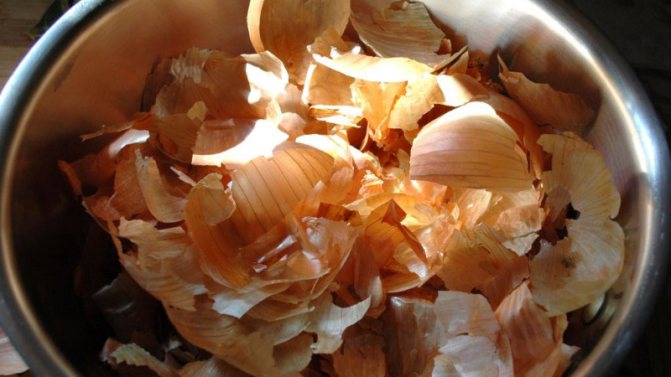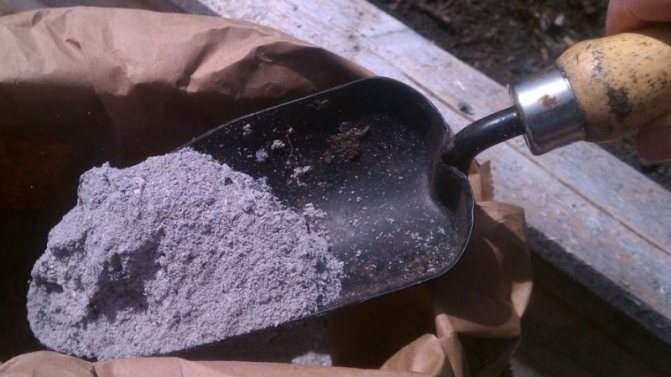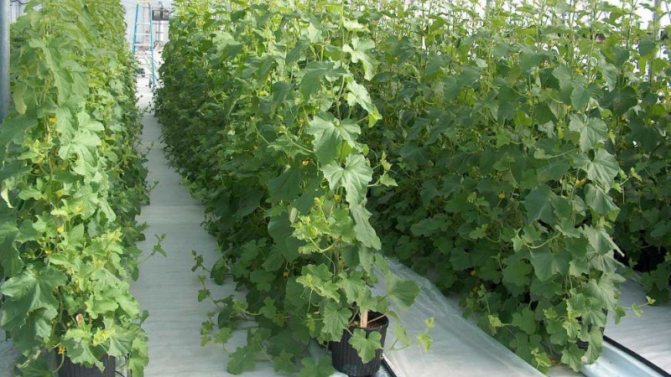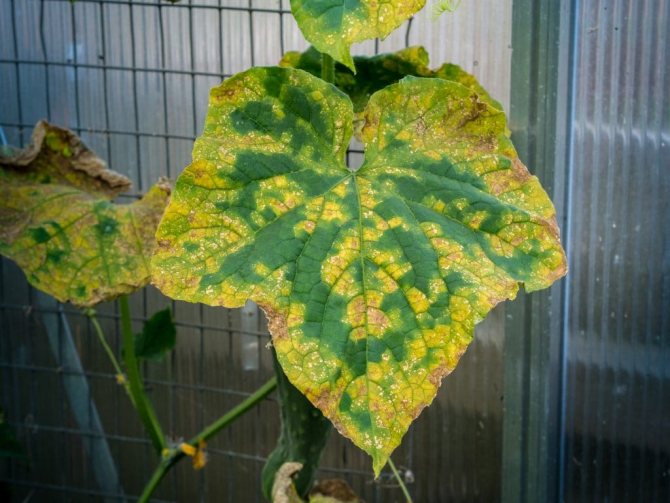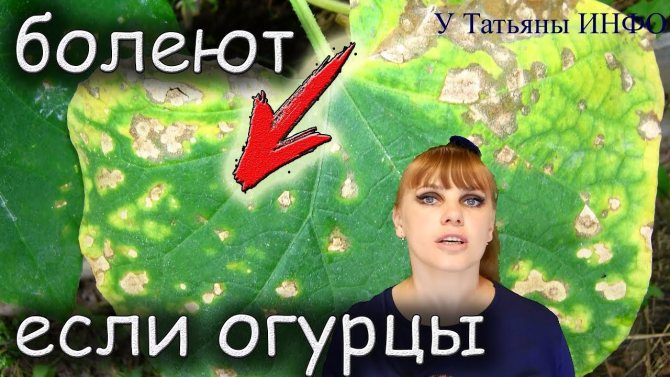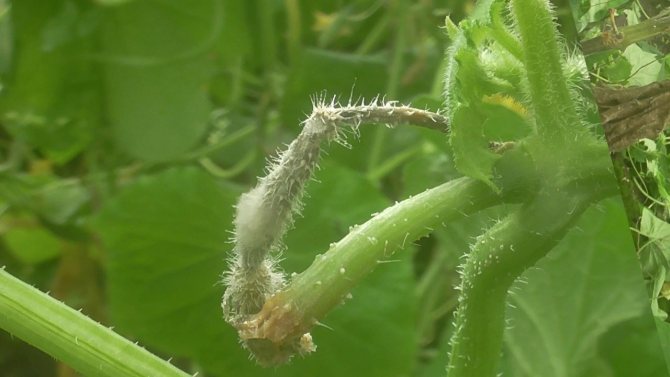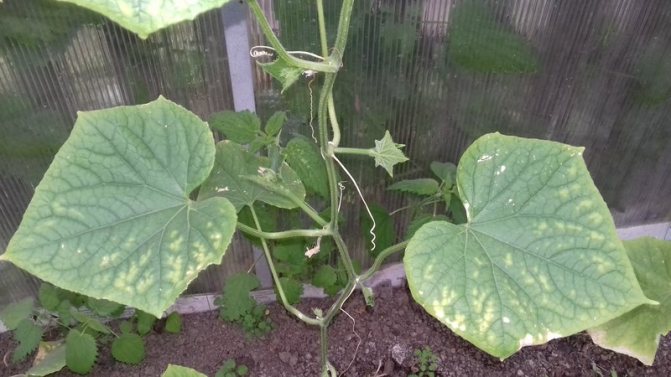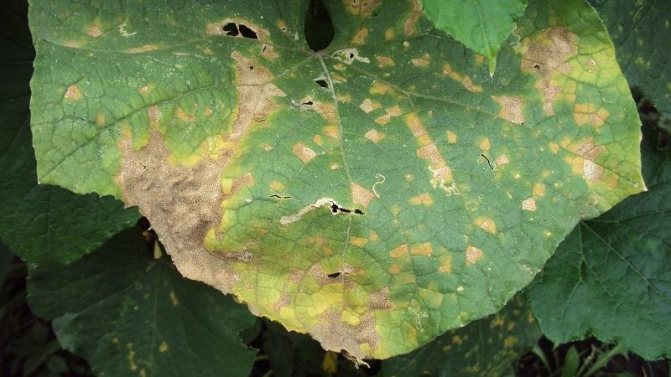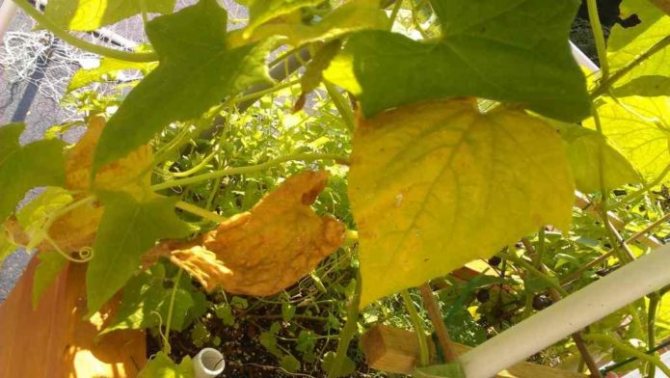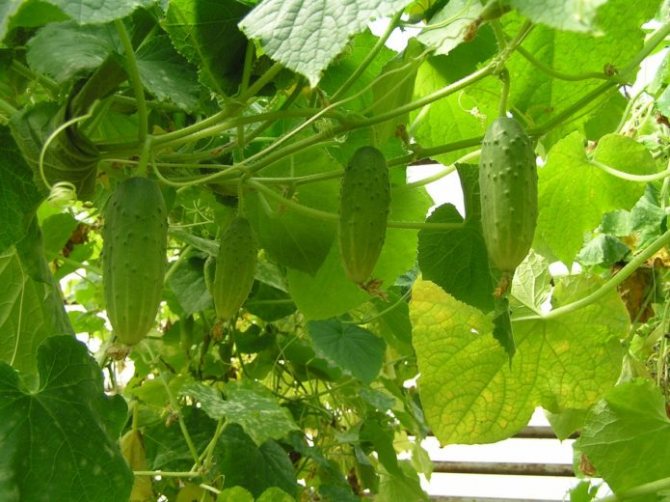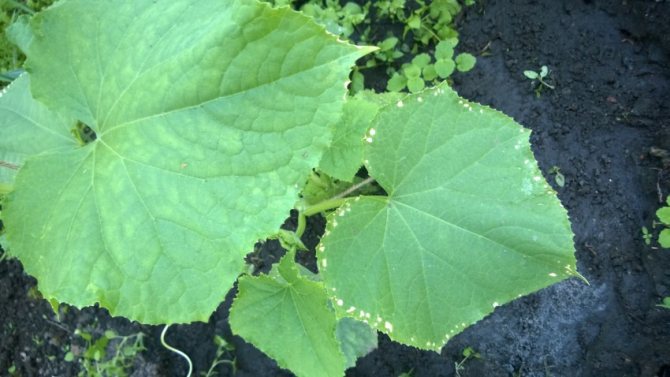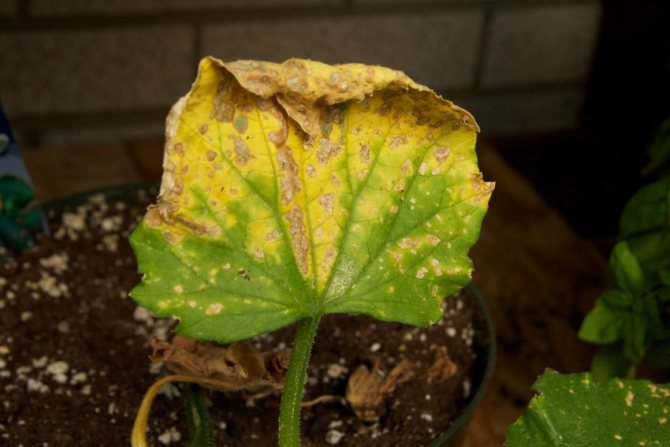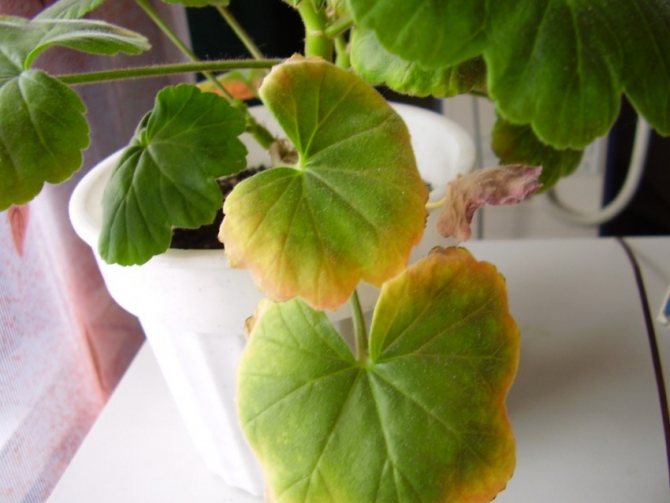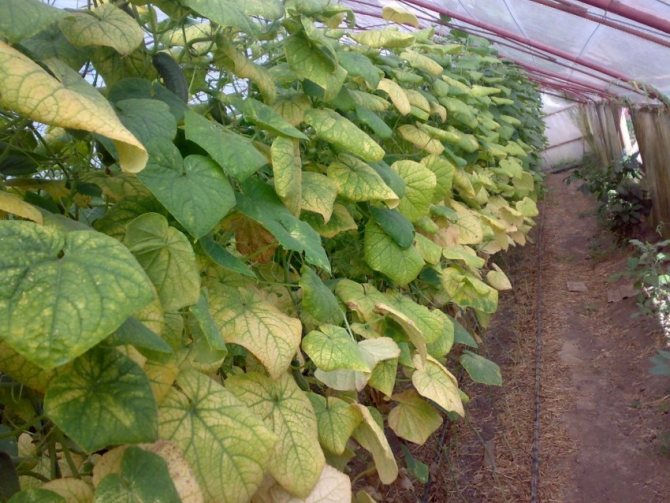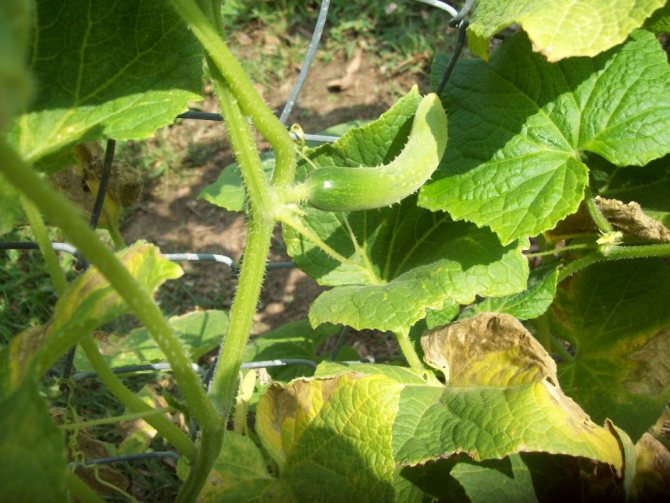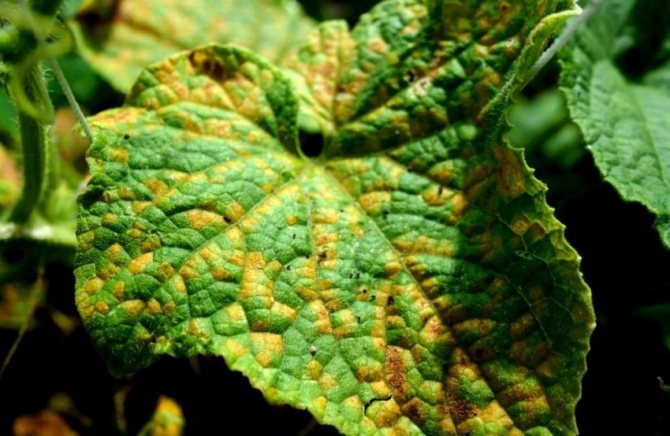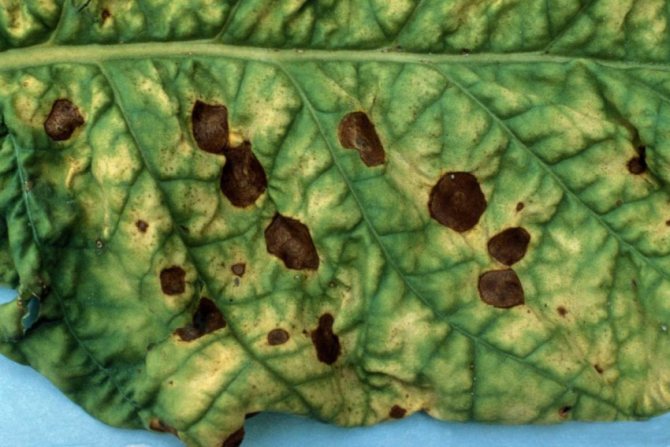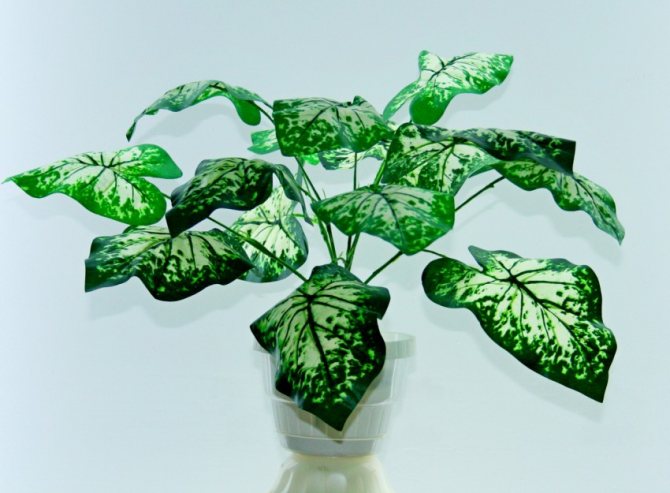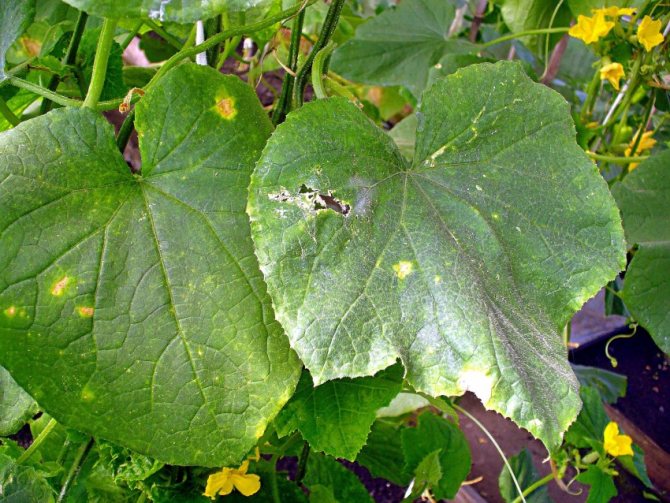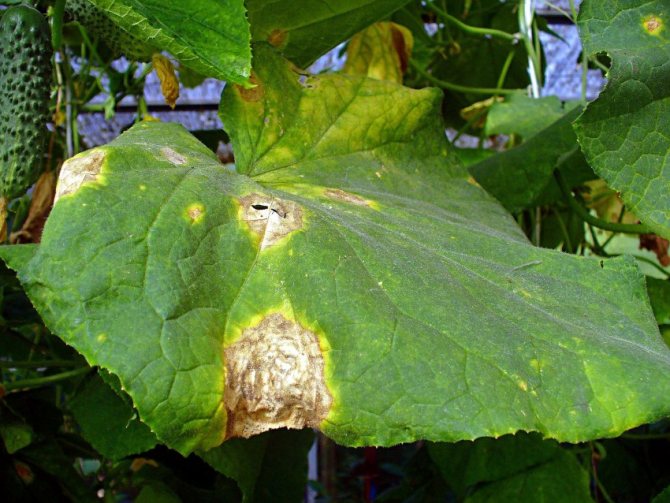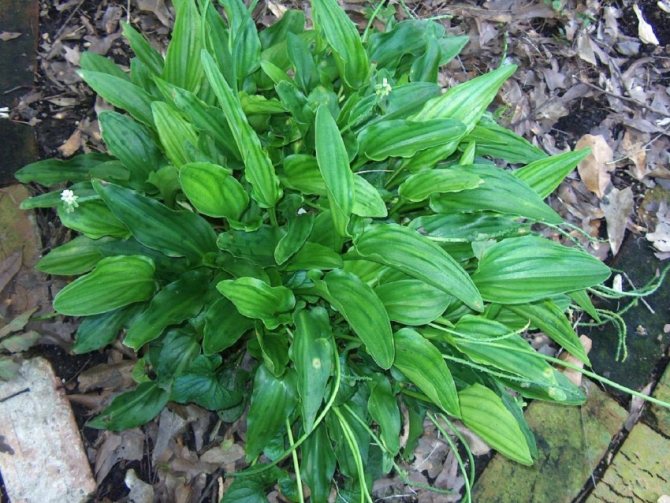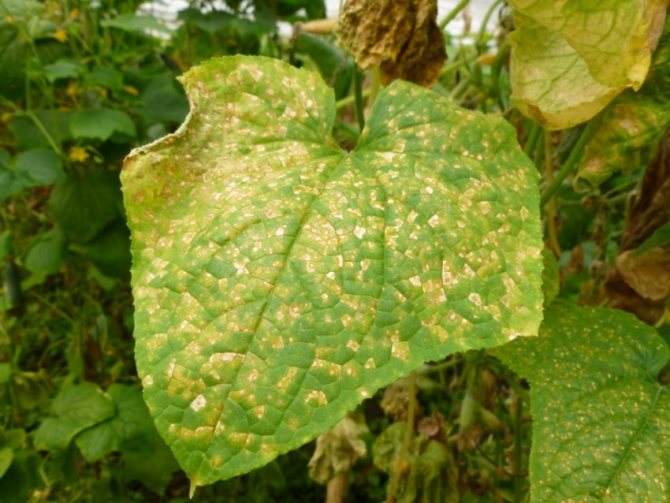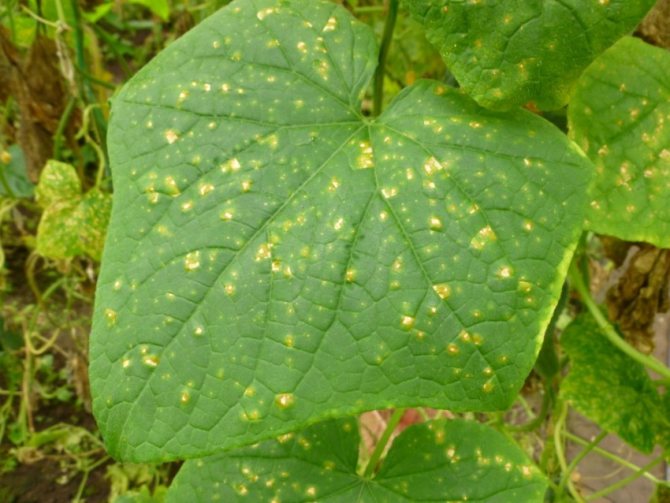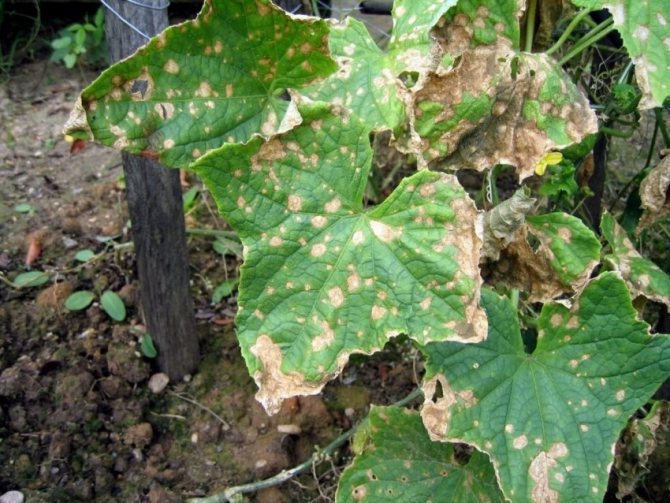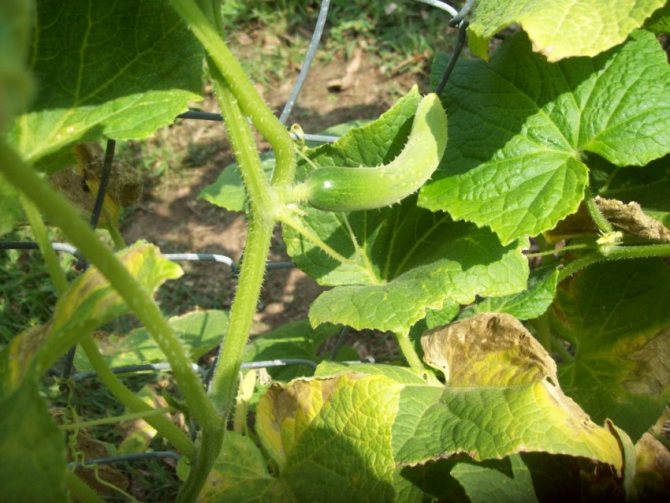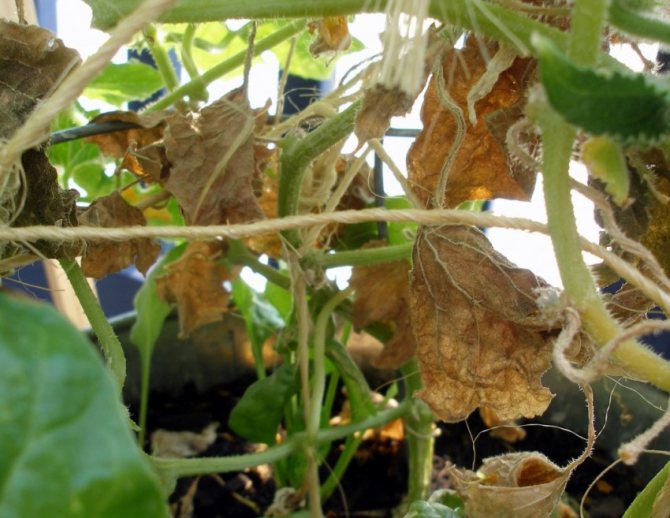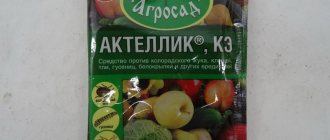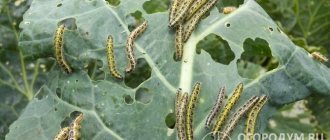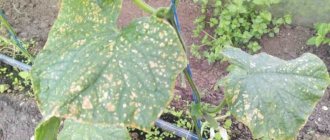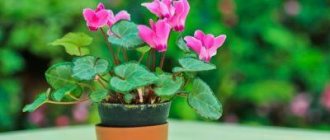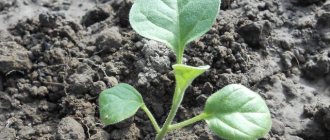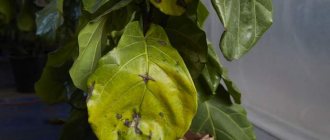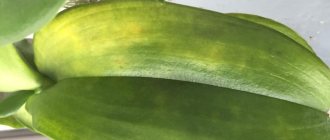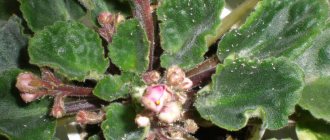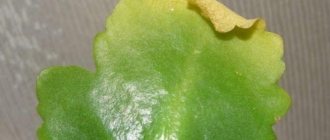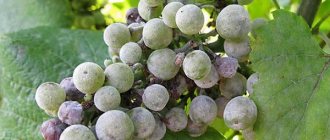Why do the leaves of seedling cucumbers turn yellow and dry?
It is difficult to grow cucumbers in a greenhouse, since the plant is very moody. The slightest errors in watering or a change in temperature immediately affect the state of the seedlings.
Causes of yellowing and drying of leaves in cucumber seedlings:
- Excessive, insufficient, or improper watering. The most interesting thing is that the state of the plant is affected not only by the amount of moisture, but also by the frequency of watering.
- Lack of light. In greenhouse conditions, the seedlings should be illuminated before using fluorescent lamps.
- There is a lot of sun. In direct sunlight, the plant turns yellow quickly. Therefore, on the south side, the plant needs to be shaded.
- Lack of minerals. With a lack of nutrients, the plant dries and turns yellow.
- Insects. These are usually slugs or large insects that damage the root system.
- Not enough storage. When planting seeds, consider the amount of soil around the roots. Cucumbers love space and wither in small-diameter pots.
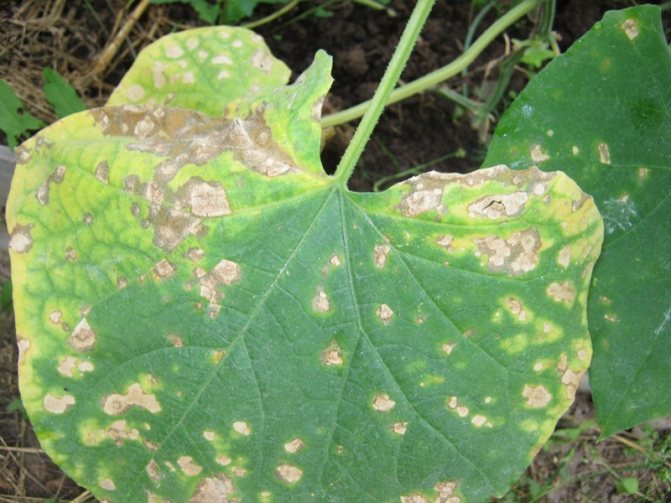
Why do the leaves of seedling cucumbers turn yellow and dry?
Cucumber root injuries
Both pests and you and I can injure the roots of a cucumber - by cutting them off when planting seedlings or due to inept actions when weeding or loosening the soil.
In case of injuries to the roots of a cucumber as a result of loosening the soil, it is necessary to feed the plants with nitrogen fertilizers (ammonium nitrate 5-7 g per liter of water - the norm per square meter), then gently poke them a couple of centimeters.
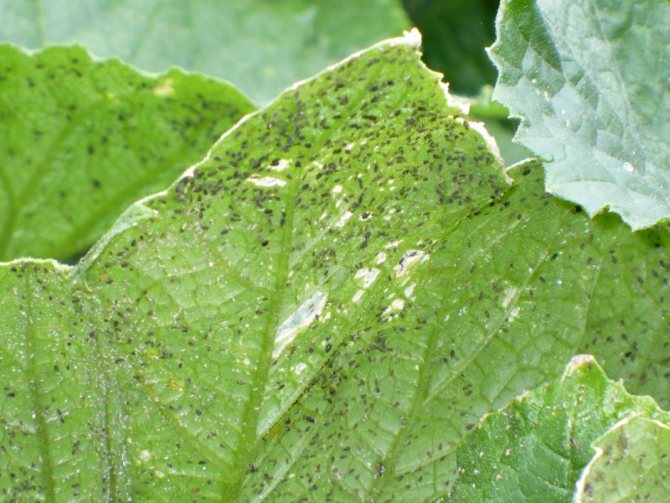

Aphid-infested cucumber leaves. <>
Why do cucumber leaves turn yellow and dry in a greenhouse?
Both in the greenhouse and outdoors, cucumber leaves can turn yellow. This is due to a lack of moisture, insects and inaccuracies in care.
Causes of yellowing of leaves in a greenhouse:
- Insects. In a greenhouse, the plant can infect whitefly, melon aphids and spider mites.
- Wrong climatic conditions. This can be frequent and very abundant watering. A decrease in temperature below 14 ° C negatively affects the state of the plant. The optimum temperature is 26 ° C.
- Powdery mildew. In this case, the stems and leaves are immediately covered with a whitish bloom. Over time, the leaves dry and turn yellow.
- Fusarium. It is a fungal disease that blocks the supply of nutrients to the roots of the cucumber. It turns out that due to the lack of minerals, the leaves dry and wither.
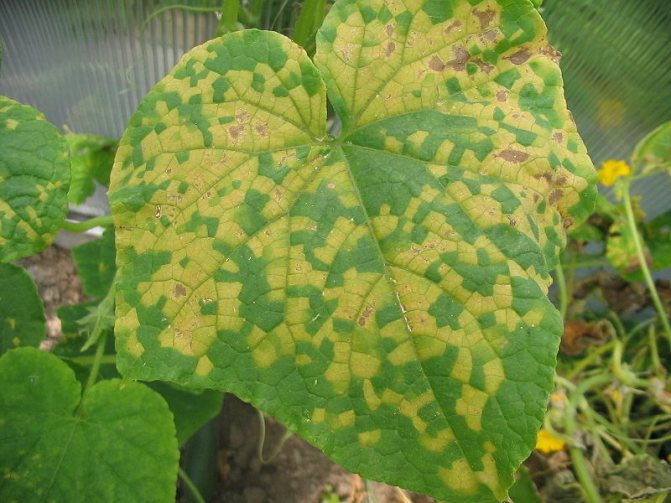

Why do cucumber leaves turn yellow and dry in a greenhouse?
Treatment in the form of dressings
Experienced gardeners have long been using proven traditional methods of treating vegetable crops. For this, improvised means and simple products are used.
- Milk and soap fertilizer
To prepare this composition, you must mix 10 liters of water, 1 liter of milk and laundry soap - 20-30 g, add 30 drops of iodine infusion. It is worth processing with a solution when the first pair of leaves appears on the culture. It is recommended to do this regularly - every 10 days.
- Top dressing with bread with the addition of iodine
For this fertilization, bread should be soaked overnight (one loaf is enough) in 10 liters of water. In the morning, knead the bread gruel and add 1 bottle of iodine there. Dilute the whole mixture in 10-12 liters of water and only then spray it.The procedure should be repeated every 10-14 days.
- Onion infusion
Take a liter jar of onion husks and pour 12 liters of water over it. The mixture must be brought to a boil and left to infuse for half a day. After that, dilute with water 1: 4 and spray. The remaining composition should be poured under the root of the plant.
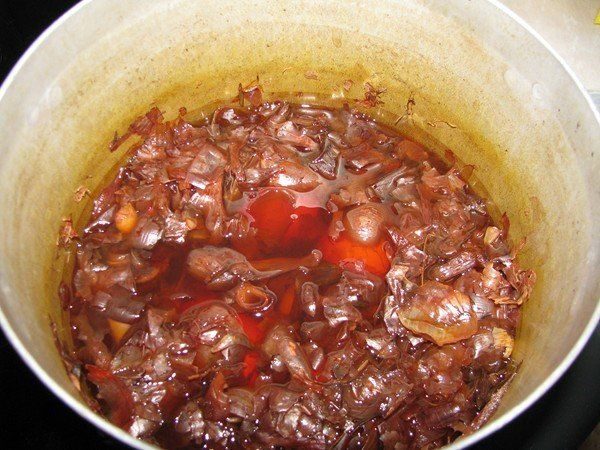

- Feeding with manganese crystals
When the first signs of yellowness begin to appear, the vegetable crop should be treated with a 1% solution of potassium permanganate.
Why do cucumber leaves turn yellow and dry in the ground?
After transplanting cucumber seedlings into open ground, the problems for gardeners do not become less. The fact is that the plant is capricious and in the open field it is even more difficult to ensure normal climatic conditions.
Reasons for yellowing and drying of leaves in the open field:
- Bad place. If you planted a plant in the place where melons, pumpkins or squash grew last year, then cucumbers will grow poorly here. This is due to soil depletion.
- Abundant watering in the daytime. The plant should be watered in the evening. This is due to the fact that droplets of moisture falling on the leaves heat them up very much. This provokes burns.
- Densely planted plants. Cucumbers, like any other vegetable crop, need to be dived. If this is not done, then the leaves will not have enough light and they will turn yellow.
- Diseases or insects... As in greenhouse conditions, and on the ground, plants can dry and turn yellow due to powdery mildew, slugs, aphids and spider mites.
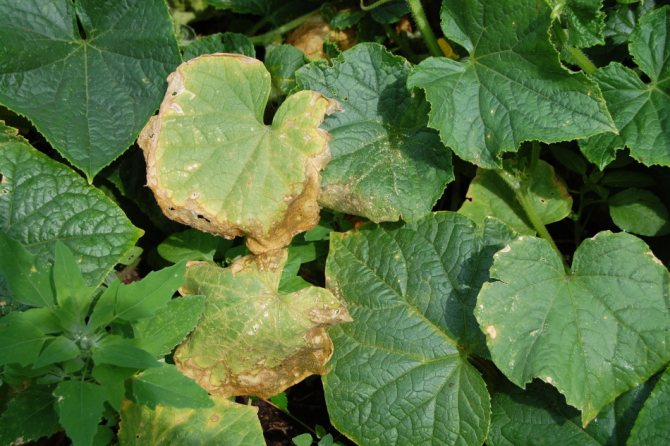

Why do cucumber leaves turn yellow and dry in the ground?
The nature of the yellowing of the leaves
Depending on the cause, discoloration can manifest itself in different ways:
- spotting indicates a fungal infection, or sunburn;
- yellowness against the background of white dots occurs due to the work of pests;
- curling of leaves downward, breaks "speak" of a lack of calcium in the soil;
- blanching and brittleness of the edges of the leaf plates indicates a lack of nutrients or hypothermia.
If yellow streaks stand out against the background of greenery, the cucumbers lack sulfur. Potassium deficiency causes severe depigmentation of the leaf plates.
What to do if the leaves of cucumbers turn yellow?
There are many ways to combat yellowing of leaves. But in any case, it is better to resort to preventive measures.
Ways to combat yellowing of cucumber leaves:
- Do not plant a crop in one place every year. So, you risk depleting the soil and the plants will wither.
- When transplanting seedlings into open ground, inject a little ash into each hole. This will make the soil more suitable for growing crops.
- Apply organic fertilizer from time to time. Ammonium nitrate is well tolerated.
- Be sure to use biologics. Trichodermin can be considered one of the best.
- An excellent drug for the destruction of parasites and diseases is Quadris. A Bordeaux mixture solution is often used.
- You can use the HOM fungicide to treat dysbiosis.
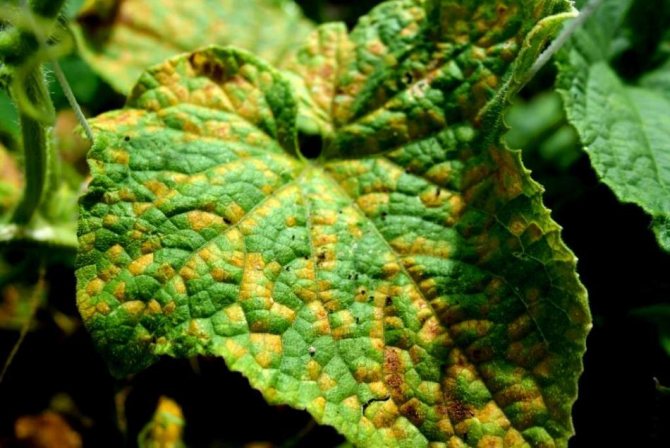

What to do if the leaves of cucumbers turn yellow?
The scheme for processing cucumbers from yellow leaves
Most farmers treat diseased plants according to the order developed by many years of practice:
- determine and eliminate the cause that caused the change in the color of the leaves;
- choose the tool most suitable for eliminating the consequences of the impact of an unfavorable factor;
- free plants from yellowed leaves;
- prepare a working solution (chemical - according to the instructions, folk - according to the recipe);
- spray all parts of the plants with the agent, if necessary, water the soil around the cucumbers.
Do not forget about dressings for cucumbers, selected taking into account the type of soil, variety and appearance of the plants. Many farmers add brilliant green to nutrient solutions (observing the recommended dosage).This makes up for the lack of copper in the "menu" of cucumbers, especially if they grow on swampy soils.


Cucumber leaves turned yellow - what to do: folk remedies
There are many popular recipes that help with yellowing of the leaves.
Folk recipes:
- Bread. Soak a loaf of bread in water and grind the crumbs in a blender. You should get a viscous porridge. Put it in half a bucket of water and pour in a bottle of iodine alcohol solution. Sprinkle the mixture on the plant.
- Onion peel. Pour a handful of onion husks with a liter of water and boil for 2-4 minutes. Let stand for 12 hours and squeeze out the cake. Dilute to 5 liters with water and spray on the leaves. Pour the rest of the product under the roots.
- Serum. To prepare a solution for spraying, 150 g of sugar are dissolved in 2 liters of whey. The resulting liquid is poured over the roots and sprayed on the leaves.
- Potassium permanganate. At the first appearance of yellow spots, it is necessary to prepare a 1% solution of potassium permanganate and spray the leaves.
- Soda. To prevent ailments caused by fungi, plants are watered with a weak solution of soda. For 1000 ml of water, you need 20 g of baking soda. Do not spray the product on the leaves.
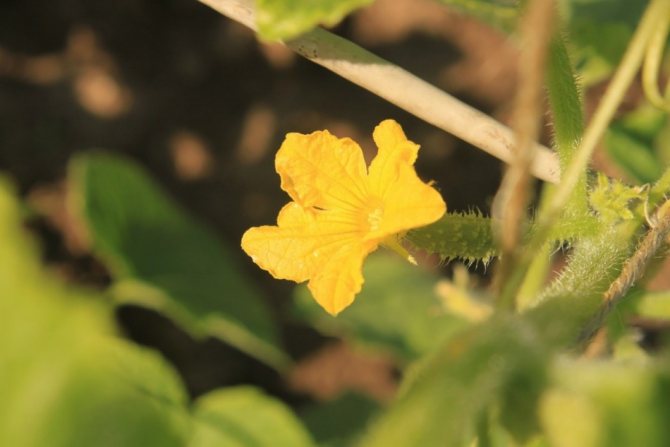

Cucumber leaves turned yellow - what to do: folk remedies
As you can see, cucumbers are a capricious plant that requires careful maintenance. The slightest mistakes in care can lead to yellowing and wilting of the leaves.
Prevention measures
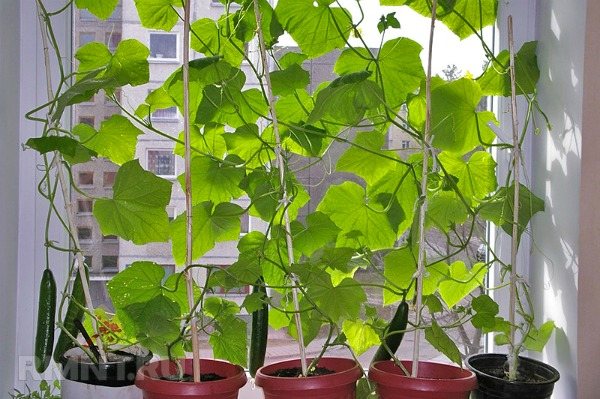

In order not to have to take up the treatment of yellow leaves, you can prevent their appearance by prophylactic methods.
The first task is to form an elastic stem. Weak foliage is given without mercy. It only draws juices from the plant and interferes with development.
There is no need to launch cucumbers, for a reason: I always have time on the windowsill. It is just such cucumbers that you need to inspect in the first place, and systematically.
Particular attention is paid to feeding. It will not be superfluous to even draw up a schedule on a piece of paper. The cucumbers on the windowsills are weaker and require more attention.
Chemical special compositions will help to avoid yellowing on foliage. However, at home, some of them are not acceptable, so there is an alternative - a folk remedy. Kefir is diluted with water and the plants on the windowsills are treated.
Cucumber pest control drugs
Many gardeners and summer residents tend not to use chemicals on their site. Moreover, now there are many modern biological products on sale that can be used for pest control. Therefore, in the arsenal of gardeners there should be biochemical preparations (fitoverm, acarin, agravertin). For example, Fitoverm Is a preparation of biological origin against pests, hemoparasites that damage vegetables, fruit trees, bushes, indoor and outdoor flowers. What "Fitoverm" helps to escape the best is from whiteflies, thrips, leafworms, moths and aphids. Fitoverm has some application features. Due to the rapid decomposition of the product under the influence of light, it is necessary to spray the plants at dusk. The number of treatments depends on the environmental conditions and the type of insect.
"Summer resident" - a natural preparation based on fir oil against sucking and gnawing pests (aphids, spider mites, whiteflies, thrips, strawberry mites, onion flies, cruciferous fleas, etc.), from garden ants and wireworms. The final treatment should be carried out 10 days before harvest.

